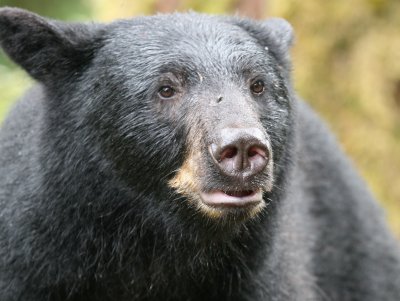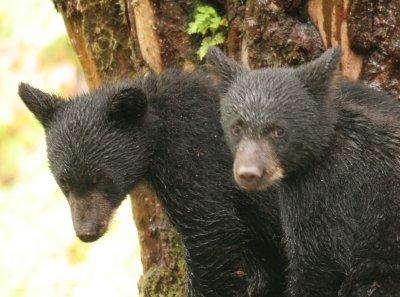

 Share This Page
Share This Page| Home | | Articles | | Symmetry | |  |  |  Share This Page Share This Page |
A deceptively simple idea we all need to understand.
— P. Lutus — Message Page — Copyright © 2008, P. Lutus(double-click any word to see its definition)
Etymology
First, about my use of the term "symmetry" instead of "symbiosis" or another word — I chose it for this topic because it encompasses biological symbiosis and several other kinds of coöperative behaviors, as well as some philosophical positions not directly related to biology. And I use "symmetry" to emphasize the balanced nature of the transaction it refers to.
Some readers may guess that the Symmetry Principle simply means the "Golden Rule," but this is somewhat misleading. The Golden Rule suggests that a person treat others as he would like to be treated, but there are some practical problems with this:
If I wanted to express the idea of symmetry in as few words as possible, I would perhaps say, "Don't expect to be treated differently than you treat others." This wording dramatizes how symmetry differs from the Golden Rule.

Origins
I want to emphasize again that the Symmetry Principle is not a human invention — we didn't invent it, we discovered it in nature. Some have argued that symmetry can only exist among thinking creatures and that it requires a capacity for reason, but those who take this position must ignore copious evidence for the existence of symmetry at all levels in nature.
There are some natural forces that, over time, favor the evolution of symmetrical relationships. A classic example might be a predator/prey relationship, in which the predator simply attacks and eats the prey, with no element of reciprocation. The problem with this relationship is that the predators will die off once the prey have all been eaten, and both species will disappear from the environment.
Over time, natural selection can turn such a one-sided relationship into a symmetrical one. Within the predator species, any random genetic mutations that prevent the rapid extinction of the prey species will contribute to the fitness and reproductive success of the predator. As a result of this, one should expect to see behaviors evolve within the predator species that favor the continued existence of the prey species. In the same way, evolution within the prey species will favor behaviors that prevent their rapid extinction, for the same reason: reproductive fitness. In this way and over time, both species will gravitate toward a relationship that assures the survival of both. To put this another way, their relationship will become increasingly symmetrical.
Joined by Fate
Remember about the above ideas that they are well-supported by observational evidence. Examples abound in which two species are bound together to the degree that, if the specifics of their relationship were to be disrupted, both species might disappear. One of my favorite examples is the linked fates of the Dodo Bird and the Tambalacoque tree.
In 1598 Portuguese sailors first made landfall on the island of Mauritius and discovered a large, tasty bird the sailors quickly named "Dodo" (meaning "simpleton") because it was unable to defend itself against the sailors. After a few visits by hungry sailors, there were no Dodo birds left.
It was recently discovered that a certain useful tree has nearly disappeared from the island, and most of the living specimens date back to the extinction of the Dodo bird. It turns out the Tambalacoque tree had depended on the Dodo bird to break open the tree's rather tough seed pods and distribute the seeds across the landscape, and because the Dodo bird has been wiped out, the tree no longer has a way to distribute its seeds. As a result, the Tambalacoque tree is gradually becoming extinct on Mauritius. This example is interesting because it reverses the usual relationship between plant and animal — it's much more common for an animal species to disappear after the extinction of a plant it needs to survive.
Lichens
The Dodo bird example is interesting but not perfect, because the bird probably didn't rely totally on the tree for its survival. For a stronger example of species symmetry, one in which the fates of two or more species are inextricably linked, we turn to an iconic example: lichens.
The single name "lichen" refers to a symbiotic relationship between two organisms, usually a fungus and an alga. At risk of oversimplification, the fungus provides the partnership with water and minerals that it absorbs from the environment, while the alga uses photosynthesis to process the water and minerals to feed both the fungus and itself. It's important to add that the two components of a lichen are so closely bound that, outside a laboratory, it's difficult to distinguish the partners.

There is a variation called a "tripartite lichen" in which three species (a fungus, an alga, and a cyanobacterium) coexist. The fungus provides water and minerals, the alga photosynthetically fixes atmospheric carbon dioxide, and the cyanobacterium fixes atmospheric nitrogen. All these contributions are beneficial to all the members. It's not clear whether the three members argue, or, if they do, how we would know.
Bear and Human
This story isn't as compelling as the lichen or Dodo bird examples, but it describes the spontaneous creation of an ad hoc symmetrical relationship between two species that are completely unrelated and normally mutually hostile. It speaks to the possibility of symmetrical transactions in unlikely circumstances. Best of all, it happened to me.
I was in Alaska a few summers ago, sitting on a stump by a salmon stream, watching the bears fish. From time to time I snapped a picture. Then I noticed a mother bear trying to divide her attention between fishing and protecting her cubs from predatory male bears — who, if given a chance, will kill a female's cubs in order to bring her into estrus and then mate with her.
Mama bear would try to focus her attention on the stream and the fish, but periodically she would be obliged to abandon fishing and chase a male bear away from her cubs. It became evident that she couldn't handle both jobs at the same time. Finally, after a few repetitions of this frustrating pattern, mama bear sauntered over to the stump I was sitting on, moved in close, and looked me in the eye. At first I wondered whether she saw me as a threat to her cubs — was she going to attack me? But she seemed more curious than angry — she sniffed the air, trying to discover what kind of creature I was.
As so often happens in Alaska, within a matter of seconds I had lost control of the situation. Mama bear was now too close, I couldn't jump up and run away without inviting a pursuit that I would lose, so I just sat on my stump and avoided eye contact. After a bit, mama bear relaxed a bit, growled at her cubs — who obligingly sat down next to me — then returned to her fishing. It seems she had decided her cubs were safe with me, and this would free her to concentrate on fishing!

This was a particularly strong example of something I've noticed over the years while visiting bear country — female bears know the males are justly terrified of humans (because most have been hunted), so, once a female decides you're safe, she will do all she can to stay in your company. But this was the first time I had been entrusted with a bear's cubs.
Obviously a bear with cubs will avoid the company of humans if she can, but in this case the human was the safest choice and she knew it. I was obviously not a threat to her cubs, and I wasn't going anywhere — an easy decision.
The transaction: mama bear got a babysitter, while I got some nice pictures and a terrific story to tell. A nice example of cross-species symmetry.
Prisoner's Dilemma
Normally an idea like symmetry, even if it's observed and clearly exists as a biological principle, can't be strictly quantified through observation, and designing rigorous experiments in a natural setting is somewhere between difficult and impossible. It's very obviously present at all levels in nature, it represents a viable survival strategy, but it's difficult to quantify.
This was true until game theorists began using computers to test strategies of competition, at which point something interesting happened to the symmetry idea. This will require some explanation.
Game theorists study games and interactions between players of games. Game theory turns out to have a number of practical applications in economics, government, military strategy and interpersonal relations. The theorists discovered that a computer could be used to quickly sort out statistical outcomes for a large number of strategies in a very short time.
"Prisoner's Dilemma" is a favorite game for theorists to analyze, because, even though the game itself is simple, the possible strategies are quite complex. The game was designed by the RAND corporation (a well-known think tank) in the 1950s, and it can be described like this:Here is a logic diagram with the same information:
Both A and B serve six months B goes free, A serves ten years A goes free, B serves ten years Both A and B serve five years
For convenience and brevity, a suspect who testifies is called a "defector," one who remains silent is called a "coöperator." The game is interesting because it has some of the properties of real-world situations — one player cannot know what decision the other player will make, there are advantages and risks, and the real complexity arises when trying to hit upon an optimal strategy in the presence of any number of competing strategies.
If the game is played in one round, it becomes obvious that the optimal strategy is for both players to defect — both testify against the other. But the one-round version of the game is least like two organisms or species in nature, who will very likely enounter each other repeatedly.
In another form, the game is played in multiple rounds — this is called "iterated Prisoner's Dilemma." In this variation, a player can adjust his strategy based on a record of the other player's choices. This is much more like survival strategies in nature, where your opponent's past behavior can be taken into account in choosing your next move.
After a lot of discussion among game theorists, a researcher named Robert Axelrod organized a Prisoner's Dilemma tournament, in which players were invited to submit game strategies as computer programs, and the strategies were tested against each other in the multiple-round form of Prisoner's Dilemma.
In experiments prior to Axelrod's tournament, it appeared that a posture of coöperation was the optimal strategy in indefinitely long games, and this seemed to agree with some observations of interactions in nature. But Axelrod's tournament and its analysis substantially changed this assumption.
Overall, the tournament showed that greedy strategies failed in long games, as did strategies that blindly coöperated regardless of what the other played did. In his book The Evolution of Coöperation (1984), Axelrod argued that in nature, certain kinds of coöperative strategies would evolve from selfish strategies over time.
Benevolent tit-for-tat
Although many of the tournament entries were complex, a contestant named Anatol Rapoport submitted a very simple strategy he called "Tit-for-tat." Tit-for-tat worked like this:
Raraport's strategy could be expressed in just four lines of computer code, but notwithstanding its simplicity, it defeated all the other strategies.
I call the Rapaport strategy "Benevolent tit-for-tat" because of its initial coöperative posture, and I regard its tournament success as strong support for this strategy's value in nature and in human behavior. I think the most concise expression of what I call the Symmetry Principle is the Rapaport strategy — in essence, coöperate at first, but don't be a fool.
Most philosophical ideas, however attractive they may seem in print, have little chance to be validated either in nature or a laboratory, which to some degree explains philosophy's low ranking among adademic disciplines. Given this distance from quantitative validation, it is improbable that a philosophical idea like symmetry would find support through observation of nature, and it is even less probable to see validation in a rigorous, quantitative comparison like the computer tournament just described. But for symmetry, both these things have happened. On that basis, I think the Symmetry Principle deserves to be at least understood, if not put into practice in people's lives.
We next examine how symmetry works between people.
| Home | | Articles | | Symmetry | |  |  |  Share This Page Share This Page |